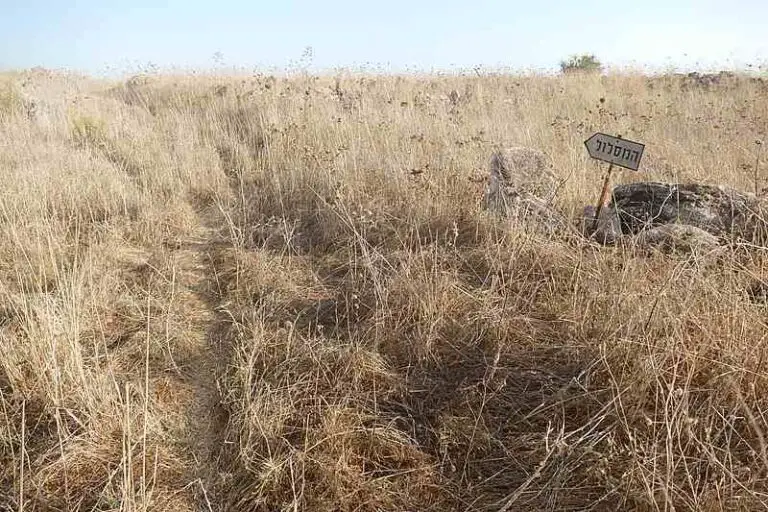7 Effects of Soil Erosion Explained
Effects of soil erosion are; high flood risk, land loss, desertification, stormwater pollution, low agricultural productivity, air quality reduction, and infrastructure damage.
This article discusses the effects of soil erosion, as follows;
1). High Flood Risk (as one of the Effects of Soil Erosion)
Soil erosion increases the risk of other anthropogenic and natural hazards like flooding [2].
The role of soil erosion in increasing flood risk is facilitated by various factors and mechanisms. These include the redistribution of sediments.
When sediments or soil particles are displaced by agents of erosion, they may be redistributed in such a manner that causes the clogging of waterways. This event can lead to flooding.
Also, some types of soil erosion such as scalding and glacial erosion, can cause soil compaction, thereby reducing both permeability and water-holding capacity. As a result, soil loses its capacity to absorb water, and the risk of flooding becomes high.
Flooding from soil erosion is most likely to occur in areas with unstable climatic conditions, high precipitation, or extensive freeze-thaw cycles.
2). Land Loss
One of the ultimate consequences or effects of soil erosion is land loss.
The term ‘land loss’ here refers to the intensive degradation of land resources such that they lose their quality and usability.
Soil erosion leads to intensive land degradation through various means. One of these is the alteration of soil structure through compaction and redistribution. Another is the destruction of land geomorphology and topographic relief through the formation of features like gullies.

3). Desertification (as one of the Effects of Soil Erosion)
Soil erosion alters the physicochemical conditions of the ecosystem [1]. One of the possible outcomes of such an alteration is desertification.
The factors that link soil erosion to desertification are numerous. They include impacts such as soil leaching, redistribution and fertility loss, which can result from erosion.
Also, the moisture-retention capacity of soil can be reduced as a result of erosion [6]. Other ways in which soil erosion facilitates desertification include the deforestation-effect of erosion, which causes soil to lose its vegetative covering or protection.
It is important to note that the phenomenon of desertification as one of the effects of soil erosion, is relatively-predominant in regions that are prone to drought and arid conditions.
In such regions, wind erosion is the more dominant form. Dust storms, scalding, salinization and topsoil removal are all potential facilitators of desertification.
4). Stormwater Pollution
Stormwater pollution is a potential effect of soil erosion.
This is especially the case in areas that are prone to high precipitation and flooding.
As stated earlier in this article, soil erosion can cause the clogging of waterways by redistributed sediments. The same sediments can pollute stormwater.
Aside sediments, erosive runoff can wash away hazardous chemicals from agricultural lands, and disperse these chemicals in other environs.
In aquatic ecosystems, soil erosion can cause silting, whereby sediments pollute water bodies. This is very harmful to aquatic organisms and can negatively affect their survival.
Polluted stormwater can also contaminate domestic water reserves and render the water harmful to humans.
5). Low Agricultural Productivity (as one of the Effects of Soil Erosion)
Reduction of agricultural productivity is one of the most common effects of soil erosion.
The main reason why this happens is due to the removal of topsoil by erosive agents.
When erosive agents like wind and water, remove topsoil, they degrade the agricultural relevance of soil significantly. This is explained by the fact that topsoil is usually richer in organic matter and nutrients, than subsoil layers [3].
Soil erosion and top layer removal implies nutrient leaching and organic matter loss.
Vegetation cover may also be removed, exposing the soil to further degradation.
Lastly, soil erosion can reduce agricultural productivity by inducing acidification, scalding and salinization of soil.
6). Air Quality Reduction
Soil erosion is linked to processes that can reduce air quality.
The contribution of soil erosion to air quality degradation is most pronounced in cases where the agent of erosion is wind.
When wind eroded soil, dust storms may occur, due to the sedimentary particles carried by air masses. These sediments can cause particulate matter-air pollution.
Inhalation of particulate matter is the cause of various respiratory health problems [5].
Aside sedimentary particles, soil erosion by wind can facilitate the spread of toxic materials like soot in the air.
Other impacts of soil erosion on air quality include greenhouse gas and toxin increase, due to loss of vegetation. This is especially the case where forest vegetation is lost due to erosive processes.
7). Infrastructure Damage (as one of the Effects of Soil Erosion)
Because erosion involves the forceful impact of wind, runoff, glaciers and waves, it can lead to the damage and destruction of man-made infrastructure [4].
Examples of infrastructure that can be damaged by erosion include water dams, drainage canals, wind turbines, communication and electricity distribution structures, hydroelectric power plants, and embankment structures.
There are various mechanisms by which soil erosion leads to infrastructural damage. They include tunneling and collapse, subsidence, scouring, and mudslide.

Conclusion
Soil erosion negatively affects landforms, plants, animals and humans, by removing topsoil, leaching nutrients, altering geomorphology, topography and biodiversity, and causing general environmental degradation.
The effects of soil erosion are;
1. High Flood Risk
2. Land Loss
3. Desertification
4. Stormwater Pollution
5. Low Agricultural Productivity
6. Air Quality Reduction
7. Infrastructure Damage
References
1). Babur, E.; Uslu, O. S.; Battaglia, M. L.; Diatta, A. A.; Fahad, S.; Datta, R.; Zafar-ul-Hye, M.; Hussain, G. S.; Danish, S. (2021). “Studying soil erosion by evaluating changes in Physico-chemical properties of soils under different land-use types.” Journal of the Saudi Society of Agricultural Sciences 20(1). Available at: https://doi.org/10.1016/j.jssas.2021.01.005. (Accessed 28 August 2022).
2). Bauer, M. (2019). “SOIL EROSION AND FLOOD MITIGATION IN CZ AND UK – COMPARISON, DISCUSSION AND LESSON LEARNED.” 19th SGEM International Multidisciplinary Scientific GeoConference EXPO Proceedings. Available at: https://doi.org/10.5593/sgem2019/3.2/S13.053. (Accessed 28 August 2022).
3). Darmody, R. G.; Daniels, W. L.; Marlin, J. C.; Cremeens, D. L. (2009). “Topsoil: What is it and who cares?” Available at: https://doi.org/10.21000/JASMR09010237. (Accessed 28 August 2022).
4). Joseph, O. O. (2013). “Impact of Erosion on Street Roads: A Case Study Of Sijuwade Area Akure Ondo State Nigeria.” Available at: https://www.researchgate.net/publication/281457224_Impact_of_Erosion_on_Street_Roads_A_Case_Study_Of_Sijuwade_Area_Akure_Ondo_State_Nigeria. (Accessed 28 August 2022).
5). Pražnikar, Z. J.; Pražnikar, J. (2012). “The effects of particulate matter air pollution on respiratory health and on the cardiovascular system.” Slovenian Journal of Public Health 51(3):190-199. Available at: https://doi.org/10.2478/v10152-012-0022-z. (Accessed 28 August 2022).
6). Zuazo, V. H.; Rodriguezn C. (2008). “Soil-Erosion and Runoff Prevention by Plant Covers: A Review.” Agronomy for Sustainable Development 28(1). Available at: https://doi.org/10.1051/agro:2007062. (Accessed 28 August 2022).




